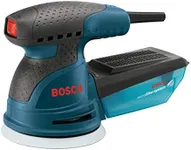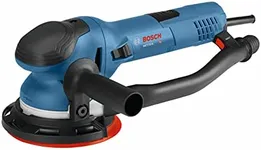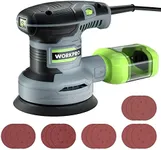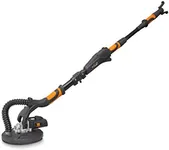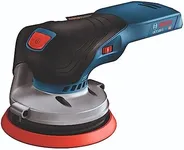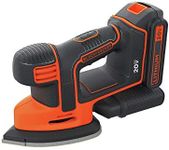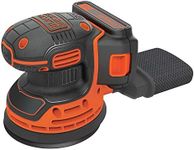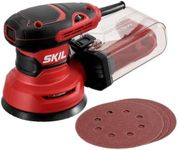Buying Guide for the Best Sanders For Wood Deck
Choosing the right sander for your wood deck is important to ensure you get a smooth, even finish without damaging the wood. The right sander can make the job faster, easier, and more effective, while the wrong one can leave marks or take much longer to complete the task. When picking a sander, it's important to consider the size of your deck, the type of wood, and how much old finish or roughness you need to remove. Understanding the key features of sanders will help you select the best tool for your needs.Type of SanderThe type of sander refers to the design and motion of the sanding tool, such as orbital, belt, or drum sanders. This is important because each type is suited for different tasks: belt sanders are powerful and good for removing lots of material quickly, orbital sanders are gentler and better for finishing, and drum sanders are often used for very large, flat surfaces. If you have a large, rough deck, a belt or drum sander can save time, but for smaller or more delicate decks, an orbital sander may be easier to control and less likely to damage the wood. Think about the condition and size of your deck to decide which type fits your needs best.
Power SourceSanders can be powered by electricity (corded), batteries (cordless), or even by hand. The power source affects how long you can use the sander and how much power it delivers. Corded sanders provide consistent power and are good for big jobs, but you need access to an outlet. Cordless sanders offer more mobility but may need frequent battery changes for large decks. Hand sanders are only suitable for very small areas or touch-ups. Consider how large your deck is and whether you have easy access to power when choosing the right power source.
Sanding Surface SizeThe sanding surface size is the area of the sander that comes into contact with the wood. Larger surfaces cover more area quickly, making them ideal for big decks, while smaller surfaces are better for detailed work or tight spaces. If your deck has a lot of open space, a larger sander will help you finish faster. For decks with railings, corners, or intricate details, a smaller sander or an additional detail sander may be necessary to reach all areas.
Dust CollectionDust collection refers to the sander's ability to capture and contain the dust created during sanding. This is important for keeping your work area clean and for your health, as wood dust can be harmful if inhaled. Some sanders have built-in dust bags or can be connected to a vacuum. If you are sanding a large deck or working in an area where dust could be a problem, look for a sander with effective dust collection to make cleanup easier and protect your lungs.
Weight and ErgonomicsThe weight and ergonomics of a sander affect how comfortable it is to use, especially for long periods. Heavier sanders can be tiring to use but may be more stable and effective for large, flat surfaces. Lighter sanders are easier to maneuver and better for vertical or overhead work. Ergonomic handles and vibration reduction features can also make a big difference in comfort. Think about how long you’ll be using the sander and whether you need to reach awkward spots to choose a model that feels right in your hands.
Speed SettingsSpeed settings allow you to control how fast the sander moves. This is important because different tasks require different speeds: higher speeds remove material faster, while lower speeds are better for fine finishing. Some sanders have variable speed controls, while others operate at a single speed. If you want more control over your sanding, especially if your deck has both rough and smooth areas, look for a sander with adjustable speed settings.
